Square Enix Message Board
↕

It's worth noting registrations do not equate to active subscribers, although the base game does require a purchase. According to a translated 4Gamer interview with Director Naoki Yoshida, in March around 500,000 people were logging into A Realm Reborn each day. [Image: Square Enix]

↕


↕
Final Fantasy XIV: A Realm Reborn, the game that has earned more than 30 “Best MMO” and “Best RPG” awards, is available today for PS4.
Join players from around the world as you seek to uncover the mysteries of the realm of Eorzea. What are the ferocious Primals that threaten the world? Can you stop the relentless Garlean Empire as they seek to conquer all the free peoples of the realm? Experience an ever-evolving Final Fantasy story with your friends, and forge your name in the annals of history as a true Warrior of Light.
Utilize the unique features of PS4 and take your adventuring to a whole new level. Share your experience live with built-in streaming, or post a triumphant screenshot when you finally defeat the ferocious Titan. Busy day at the office with no time to play? Use Remote Play on PS Vita to continue your quest, or to finish up your crafts while at the office (We won’t tell!).
The Final Fantasy XIV: A Realm Reborn Collector’s Edition and standard edition are both available from your favorite retailers! Pick it up today and begin your adventure in Eorzea!

↕
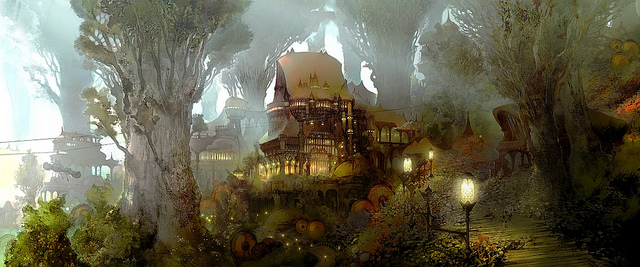
To summarize, once you've switched to the PS4 game, Square Enix says there's no playing again on PS3 with your existing copy, so be sure it's what you want to do. If you'd prefer to play on both systems, you can purchase a PS4 version separately.
As for the how, the PlayStation Blog has a step-by-step guide to take you from PS3 to PS4. Once you're there, you'll be able to explore among PS3 and PC players, and you can use your characters across all platforms that you've activated with your account. [Image: Square Enix]

↕


Hello again. It’s Friday, the week is almost over, and for some of you, early access on PS4 is about to begin. A weekend full of adventures in Eorzea lies ahead — the first of many!
So, for those of you who have already been playing Final Fantasy XIV: A Realm Reborn on PS3, only one question remains: “How in the world do I upgrade my PS3 version?!”
And this is what we’ll help with you, right here, right now.
Some general information before that:
- If you’ve played Final Fantasy XIV on PS3, you can upgrade to the PS4 version for free.
- The upgrade will be available from today until at least the end of the year.
- Make sure that you’ve logged in on your PS3 version at least once, so it’s correctly registered in our systems.
- Remember that you will not be able to access the game from your PS3 anymore after the upgrade to PS4 has taken place!
Important: the upgrade option is currently scheduled to go live at approximately 1:00 AM Pacific on Friday, April 11th.
First of all, log into the MogStation using your Square Enix account, visit the account services page, and select the service account that you want to upgrade. Once selected, you should already see a banner with the option to upgrade from PS3 to PS4. Click on it. You’ll now be presented with the details of the upgrade campaign. I know it’s a lot of text, but please read it carefully, as it contains a lot of information about the upgrade process. When you’re done reading, confirm that you agree to the terms and click “Next.” On this page you’ll be asked to confirm your upgrade. If you have multiple service accounts, please make absolutely sure that you’ve selected the correct service account you want to upgrade. If all is in order, click on “Upgrade.”And you’re done! You’ll now be displayed with a summary and your promotion code to download the game from PlayStation Store.

Please note: if you’ve participated in the second PS4 beta, this step is optional, as you already have the game client installed on your system and only need to update it. You still need to go through step 1, though!
Boot up your PS4, log in to your PlayStation account, and go to PlayStation Store. Make absolutely sure that you have the correct PlayStation profile active before you enter the store! Promotion Codes can only be used a single time, so using it on the wrong account would leave you stranded. Select “Redeem Codes” from the option menu displayed at the bottom left of the screen and enter the promotion code. When you’ve done so and confirmed the regulations, you can start the download. If something goes wrong with the download, you can try to restart it using the “Library” option in the PlayStation Store menu.And that’s it! You’ll be ready to go in no time.
If you have any further questions, please direct them to the comments, and I’ll do my best to answer them.

↕
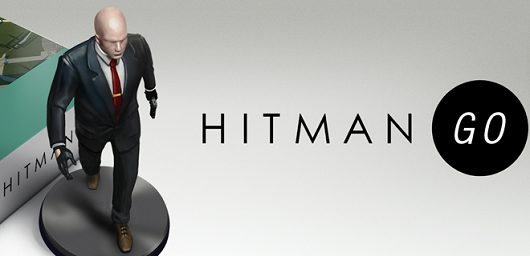
Hitman Go will include eight special "Curtains Down" levels based on Hitman: Blood Money. While Square Enix didn't set a release date for it, the Android version of the game will arrive "shortly after" it launches on the App Store. [Image: Square Enix]

↕

↕

Drakengard 3 is drawing ever closer, as we’ve made evident today by revealing our third and final wave of pre-order bonuses. If you’ve already pre-ordered the game, you’ve got this coming, but if not, you can pre-order today and get six free themes featuring Zero, Mikhail, and the game’s four Disciples: Cent, Octa, Decadus, and Dito. If the game’s Intoner Sisters are more your thing, fear not: each Disciple theme actually has three panels in its rotation, one of which showcases them with their Intoner masters. So it’s worth pointing out that technically you’re getting all the main characters, except One…
Speaking of Intoner sisters, we’ve also updated the selections of our prequel novella on www.drakengardgame.com to include Two, Three, Four, and Five. While we’ll release a few more chapters down the road, the paperback edition included in the Collector’s Edition is the only way to read the entirety of the fiction.


These chapters starring Zero’s sisters are too good not to share though, giving readers a glimpse into the personality of each one before you meet them in the game. They’re quite a charming bunch, but I won’t spoil your reading pleasure by giving out any more details than that.
We’ve also posted a new behind-the-scenes interview with Character Artist Kimihiko Fujisaka. He’s been designing for the Drakengard series since the beginning, and you can really get a sense of how excited he is to resume the project after its eight year hiatus. He points out a lot of things you may not have noticed about the game, such as how the new characters are done in a more modern style and are contrasted against enemies that retain the series’ medieval roots. He’s an incredibly talented artist, so I hope you’ll check out what he has to say.

Finally, I’d like to announce that Drakengard 3 is now available to pre-order on Amazon.com and other participating retailers. While the Japanese VO, Nier Pack, and PSN themes are exclusive to those who pre-order through the Square Enix Online Store, these retailers have their own unique pre-order bonus, with three costume variations for Zero.

↕
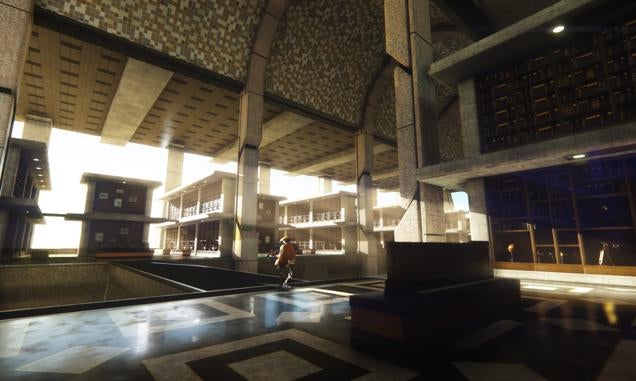

↕


↕
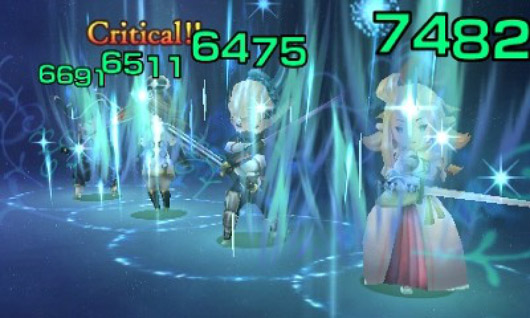
"Regardless of whether they're for smartphone or console, there's a difficult element to developing global titles, so we'll be making them without focusing too much on the 'global' aspect," Matsuda told Nikkei Trendy. "For example, in the past, when we developed console games with a worldwide premise, we lost our focus, and not only did they end up being games that weren't for the Japanese, but they ended up being incomplete titles that weren't even fit for a global audience."
Matsuda specifically cited Io Interactive's Hitman: Absolution as a victim of this practice. "The development team for Hitman: Absolution really struggled in this regard," Matsuda admitted. "They implemented a vast amount of 'elements for the mass' instead of for the core fans, as a way to try getting as many new players possible. It was a strategy to gain mass appeal. However, what makes the Hitman series good is its appeal to core gamers, and many fans felt the lack of focus in that regard, which ended up making it struggle in sales."
Square Enix reported disappointing sales for Hitman: Absolution and fellow mainstream-appeal effort Tomb Raider last year, resulting in a corporate restructuring and a shift in its publishing strategy.
The worldwide commercial success of Square Enix's Nintendo 3DS JRPG Bravely Default has since made Matsuda reconsider the company's approach. "Bravely Default [...] ended up selling well all around the world," he notes. "For the new games we'll be developing from this point on, while this may sound a bit extreme, we've been talking about making them as heavy JRPGs. I believe that way, we can better focus on our target, which will also bring better results."
[Image: Square Enix]

↕

Come April 1, Hitman: Absolution will be available as a free download for all Xbox Live Gold members. Our review awarded Hitman: Absolution 4 of 5 stars, and said that while it has minor flaws, the grim gameplay and glee of assassinating a difficult target overrides any technical issues. Hitman: Absolution will only be available for free until April 16, at which time it will be replaced by Deadlight. This post-apocalyptic platformer, developed by Tequila Works, received 3 of 5 stars in our review. While Jess found certain gameplay elements frustrating, she fell for Deadlight's art design and meticulous world building, and enjoyed the experience overall.
As with all Games With Gold offerings, the only requisite for downloading the above games is an active Xbox Live Gold membership. Full details on how to enroll in Xbox Live Gold can be found on the Xbox website. [Image: Square Enix]

↕

↕

The new Thief is also on the Humble Store page, but it's $50, without a charming green discount sticker. The Square Enix sale runs for 48 hours, until Friday, March 28 at 10AM PT.
Remember, this is all on the Humble Store section, separate from the Humble Weekly and Humble Bundle discounts, but still charitable - 10 percent of every purchase goes to charity. Check the general Humble Store page for a list of other games, some discounted, including Ether One for $17, Escape Goat 2 for $9 and Luftrausers for $10. [Image: Humble Bundle]

↕
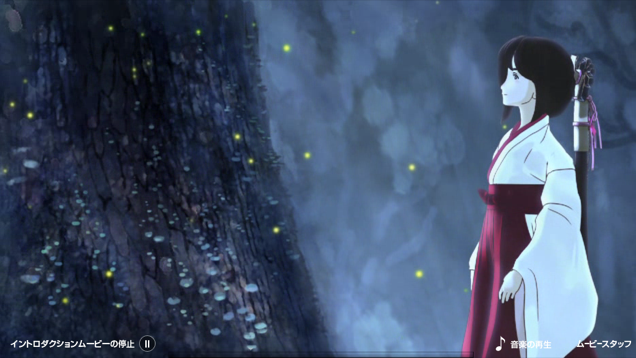

↕

South Park: The Stick of Truth is today's Deal of the Day . Normally priced at $60, during the Event, South Park has been discounted by 28 percent to $43. Appropriately, the PlayStation 3 incarnation of Lightning Returns is one of the site's timed Lightning Deals. It goes on sale at 10AM PST, at which time its price will fall by 33 percent. Thief on PS4 is another Lightning Deal. It goes on sale at 2PM PST, though Amazon has yet to reveal the game's momentary new price.
Rounding out this sales extravaganza is the Ouya, which serves as today's Bonus Deal. Instead of the console's standard $100 price tag, the device has been slapped with a 30 percent discount, reducing the cost of ownership to $70. For more details on this sale and the other non-gaming items up for cheap purchase, pay a visit to Amazon's Gold Box page. [Image: Square Enix]

↕
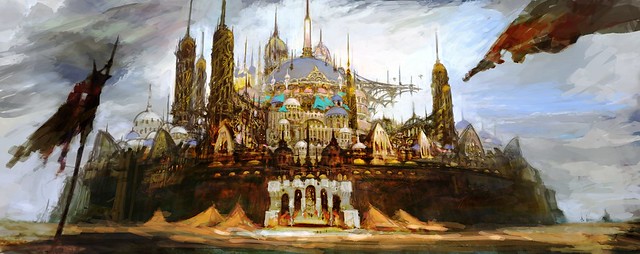
Today’s Final Fantasy XIV: A Realm Reborn post is especially interesting for those of you that have never played a subscription MMO before, as well as those of you who wonder if a monthly subscription is really for you.
When you buy a single-player game, the expectation is usually the same. Buy the game for the full price, and some DLC will follow. Final Fantasy XIV is fundamentally different, as it’s an MMO that will run for years.
With Final Fantasy XIV, your subscription fee will guarantee you regular content updates throughout the lifetime of the game. The first update hit last December with Patch 2.1: A Realm Awoken, and we’ve just launched the feature site for Patch 2.2: Through the Maelstrom.

Just a few features (not even all) that will have been added to the original game with 2.1 and 2.2 updates:
- New Main Scenario Quests, continuing your story
- Two new raids
- Housing
- New Dungeons
- New Dungeon Hard Modes
- New primals to fight: Leviathan and Good King Moggle-Mog XII
- A new difficulty for primal fights, Extreme Mode
- Player versus Player Combat
- Treasure Hunts
- New factions (Beast Tribes) with Daily Quests
- Tons upon tons of new quests of all kinds
- New customization options for your characters
- Tons of optimizations and new features for the game
…and the list goes on and on (honestly, it does — you can check out the patch notes for Update 2.1 here). There’s something in it for everyone — no matter if you like to casually make your way through the game, or if you’re a hardcore, endgame raider. And remember: all of that for the subscription fee starting at $12.99, no PlayStation Plus required.
But it doesn’t end there; we’ve got a lot of stuff planned for the future. You’ve learned by now that there’s housing — how about having a basement in your house where you and your mates can build your own airship? Awesome, right?
This is what you get for your subscription: a world that will constantly evolve and expand, for years and years to come. If you want to have a go at it, remember that our second PS4 beta phase will take place from April 4th to the 7th (and yes, you’ll be able to carry characters created during beta 2 into the final game). We’re launching on April 14th, and if you want in, feel free to pre-order now.
Looking forward to seeing you all in Eorzea!

↕
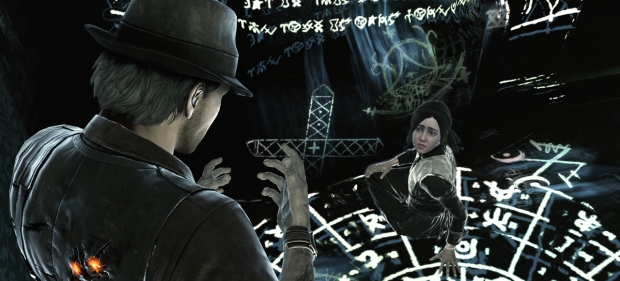
I have a piece of advice for the narrator of this Murdered: Soul Suspect trailer: follow-up with any questions you might have after your mother starts monologuing in vague terms about potential danger. She’s talking about unseen things and and saying stuff like: “There’s something out there,” without elaborating. Why not sit down with her and ask for specifics? What sort of family is this? My mum used stare sadly out of the window and tell me there was a slate that needed to be wiped clean or we’d all suffer from poverty and sickness, and when I pressed her she’d tell me to do the dishes or I wouldn’t get my pocket money. It pays to ask questions, and in that case I got £5 to spend on sweets.
… [visit site to read more]

↕

↕
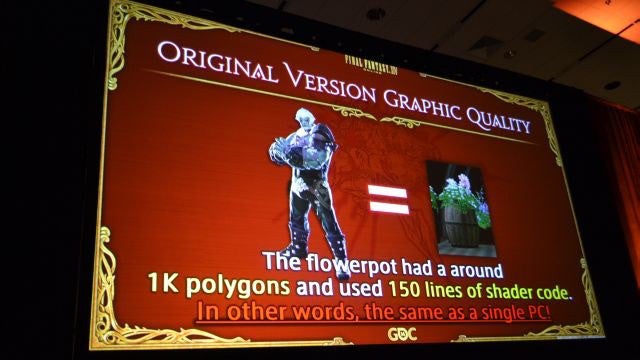

↕
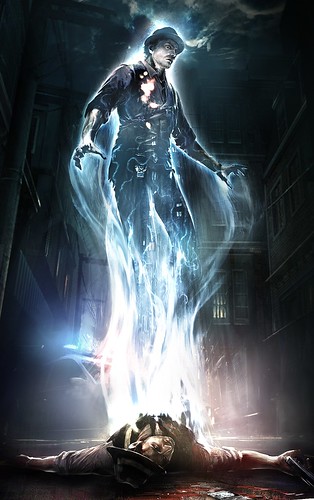
In a storm of broken glass and gunshots, Ronan O’Connor dies in the dark Salem night. So begins a supernatural investigation into his own murder. In the upcoming thriller for PS3 and PS4, help Ronan unravel the mystery of his untimely demise and save his ghost from the inevitable corruption of the Dusk.
In light of the upcoming launch of Murdered: Soul Suspect, we asked Airtight Games Chief Creative Officer Matt Brunner and Senior Design Producer Eric Studer some questions about their design process. Read on to see what inspired this ghostly thriller, and how the team fashioned a story around your own murder.
PlayStation.Blog: How did the team at Airtight Games come to the idea of a supernatural crime story? How does the detective narrative and the ghostly elements fit together?
Matt Brunner: From my recollection, we started with the core concept of a ghost game. It was that notion that got the team most excited. Our first round of gameplay and character development led us more into a ghost action hero with ranged weapons and the ability to traverse great heights. After our first prototype we all knew that it was the wrong direction. It didn’t really feel ghostly as much as it felt like a transparent, floaty noir superhero who could fight with something that almost looked like magic.

We stepped back and started to think about what would be the most interesting obsession for a ghost and one of the key elements was the notion of your own death; how it happened, what were the specific circumstances, etc. We then thought it would be really interesting if you were murdered and you wanted to dig into who did it and why.
That was quickly followed by the idea of a detective who was killed in the line of duty under mysterious circumstances and was bringing all his powers of observation and deduction into the afterlife. He had the smarts, he just needed to learn a new set of investigation abilities. A ghost detective was born.
I personally read a number of books after we came upon this thread that involved ghosts interacting with the living such as Neil Gaiman’s The Graveyard Book. These helped hone in on what felt true for a character in these circumstances, rather than what felt cool. In terms of film, I think the film that spoke the most to us was Seven. It had a mystery that unraveled over time while keeping the protagonist in the dark until the final moments. It also had a mood and tone that we felt was right on for Murdered.
PlayStation.Blog: How have the developers at Airtight responded to working with the PS4?
Eric Studer: Without a doubt the power of the platform has allowed us to realize the world of Murdered with an incredible amount of detail. So you’ll see a lot of technical upgrades that will make Salem and the Dusk an absolutely interesting place to explore.
We do have a few DualShock 4 features that we’ve implemented for the game, for instance utilizing the light bar for a few of the different game modes, but at this point we wanted to focus on making sure that the experience of the game translated perfectly to the new hardware.

PlayStation.Blog: Murdered: Soul Suspect balances crime scene investigation, exploration, and supernatural combat together. How did the team strike a balance between these three methods of play?
Eric Studer: We have three core pillars in the game. The main focus for us is the aspect of investigating the mystery surrounding your death. Second to that is the desire to exist as a ghost, and to play around with how you interact with the world. Then supporting the first two, enemy encounters come into play.

The reason we’ve prioritized the pillars in this way is that our world is driven by the narrative. Our investigations are built around the concept of the player unraveling the mystery at the same time as Ronan. Players will experience all of the twists and turns in the story with Ronan.
Being a ghost in a lot of ways is a wrapper for the whole experience, because it touches on all of our mechanics, not only in exploring the world, but also in creating unique ways to uncover the truth about various crime scenes and overcoming the threat of the enemies.
Enemies are crucial for us because they provide a much needed pacing breaker. What we found is that if players spent all of their time doing investigations, they would get fatigued. By mixing enemy encounters into the pacing, it gave us the opportunity to change the core emotion players feel. Investigations should illicit a lot of intrigue and curiosity from players, but the encounters should focus more on threat and tension. Creating this emotional rollercoaster alleviates fatigue and keeps the player invested in what will happen next.
PlayStation.Blog: How can players interact with a crime scene in ways that a normal detective cannot? What sort of opportunities does possession offer the player, and the design team?
Eric Studer: One of the exciting and challenging things about investigations as a ghost is the fact that you can’t simply walk up and interview a witness at the scene, or pick up evidence and examine it directly. What initially feels like a limitation is actually really freeing because it forces you to approach how you design an investigation from a different direction.
The advantages come from Ronan’s abilities as a ghost. First and foremost is his ability to possess human beings. This is an incredibly versatile feature in that it allows us to see through the eyes of the people Ronan possesses, listen to hushed conversations through their ears, read their minds, and in a limited capacity control their behavior and thoughts.

In addition to that ability, we have a variety of mechanics that revolve around how you interpret, analyze, and evaluate the clues that you discover over the course of the game. And in a limited capacity, you can get psychic readings off particularly strong objects that have been trapped in the Dusk.
PlayStation.Blog: How are players frightened in Murdered: Soul Suspect when Ronan is already dead? What sort of dangers do players face?
Eric Studer: The demons are without a doubt the greatest threat to spirits trapped in the Dusk for two main reasons. Fictionally, when a ghost has been in the Dusk long enough, they become corrupted by it, and turn into one of these things. The last vestige that remains of their humanity is this belief that by devouring the souls of other ghosts, they can reclaim their own humanity.
This is important for Ronan, because it reinforces the notion that he doesn’t want to stay in this realm. He needs to resolve his unfinished business so he can move on. From a gameplay standpoint, it goes back to the notion of controlling the pacing of the game. We want the player to always feel like the game is changing, or could change at any minute, so they never become comfortable with what will happen next.
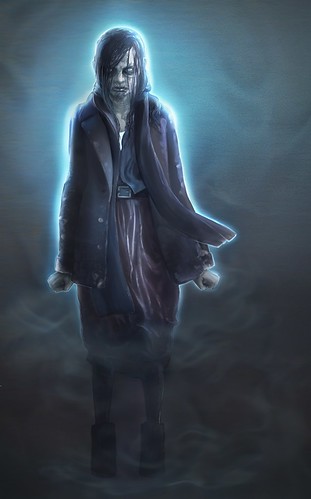
PlayStation.Blog: Will players have the opportunity to return to previous crime scenes for missed clues? Will there be any modes of play or unlocks to encourage players to complete Soul Suspect multiple times?
Eric Studer: Once you have resolved the story in a particular area, you’ll be able to revisit that space and keep exploring. Hopefully this will give players plenty of reason to spend time lost in the world.
PlayStation.Blog: What challenges does the team face in designing environments that can, technically, be walked through uninhibited? Does this help or hinder Airtight’s ability to create interesting and varied play spaces?
Eric Studer: There’s a huge challenge of course, because you don’t know how important doors are until you can’t count on them to block players’ progress. It’s a great design challenge, though, because it gives you the opportunity to go places you wouldn’t otherwise see in a video game.
Every space we build for Murdered first and foremost has to support the story our Creative Director Shiokawa-san wants to tell. Once we know where we’re going and why we’re there, then it comes down to us to visualize the space, know where we need the player to go, and where he really shouldn’t be going. Keep in mind that other objects that exist in the Dusk are on Ronan’s same plane of reality. This means that they’re physical to him, which in a limited capacity lets us control player flow.
However, we want to avoid a heavy-handed approach here, so in general we try very hard to use these objects sparingly. Ultimately, our hope is that players will feel empowered to explore every nook and cranny of the world and discover everything we’ve hidden around Salem.

↕


↕

↕

↕
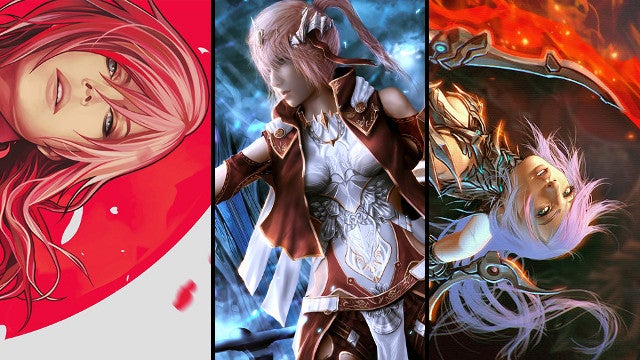

↕

↕


↕
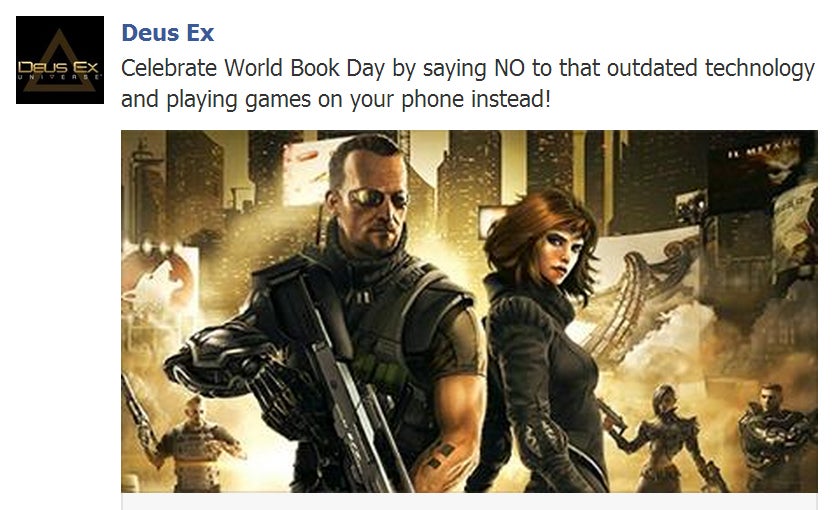

↕

Time is ticking down to the launch of Drakengard 3, coming exclusively to PS3 on May 20th. As of today, we’ve entered wave 2 of our pre-order bonuses, and fans of the developer’s previous work should not miss what we’re giving out. Pre-ordering any time between now and April 9th gets you the Nier costume pack, bringing a little bit of that game’s fantastic and beautiful weirdness to Drakengard 3.
You can equip Zero in the costume of everyone’s favorite, foul-mouthed warrior, Kainè, or don the Replicant version of the game’s protagonist. Your dragon is not forgotten either, as he can wear the awesomely creepy-faced Emil hat.
The Nier costume pack expires on April 9th, and if you pre-order by then, don’t forget that you also get another bonus that we’ll reveal on that day — so don’t miss out! Of course, if you pre-ordered before today, you’ve already got the Nier costume pack included.

Secondly, we’ve sat down with the game’s development team to bring you some insight into how Drakengard 3 came to fruition after eight years out of the spotlight. Today, we’ve got a candid interview with famed producer of the entire series, Takamasa Shiba, who discusses his experiences producing the franchise, how the series has evolved, and the “novel” idea of creating a prequel novella to dive even deeper into the characters’ histories and motivation.
You can check out the first chapter, starring Zero, on the newly refreshed www.drakengardgame.com, which now features character backgrounds, concept art, wallpapers, and super-cute downloadable Twitter icons. Call dibs on your favorite sister while you can.
We’ll be adding more chapters of the novella to the website, more interviews with the developers are coming soon, and before you know it, we’ll be revealing wave 3 of our pre-order bonuses.
May 20th is just around the corner!

↕
While far from complete, the beta test of Nosgoth will center on the game's Siege mode. "In Siege, Humans must capture specific locations and keep them safe from Vampires, while the Vampires must satisfy their bloodlust and hunt down their Human opponents," reads an official description from publisher Square Enix. The publisher also notes that the closed beta will be continually updated with new content, including additional game modes, levels, weapons and character classes.
Joining the closed beta may take some time, but it's a simple process. First, you'll need a valid Square Enix Membership account. Once that's taken care of, visit the Nosgoth website and fill out the beta registration form. There may be a bit of a wait while your registration is processed, but assuming you meet all the required criteria you should be staking bloodsuckers and exsanguinating hapless Van Helsing wannabes in short order. [Image: Square Enix]

